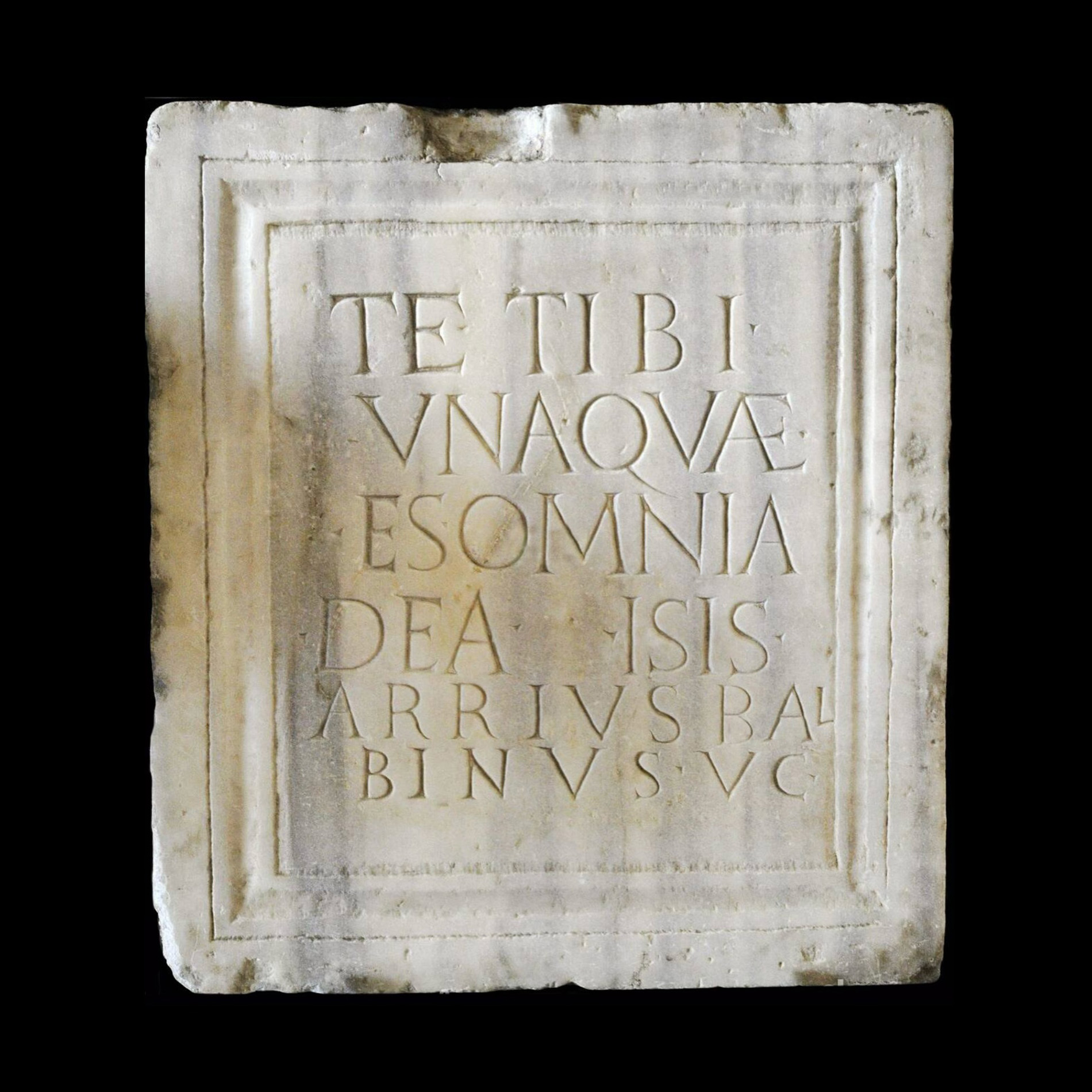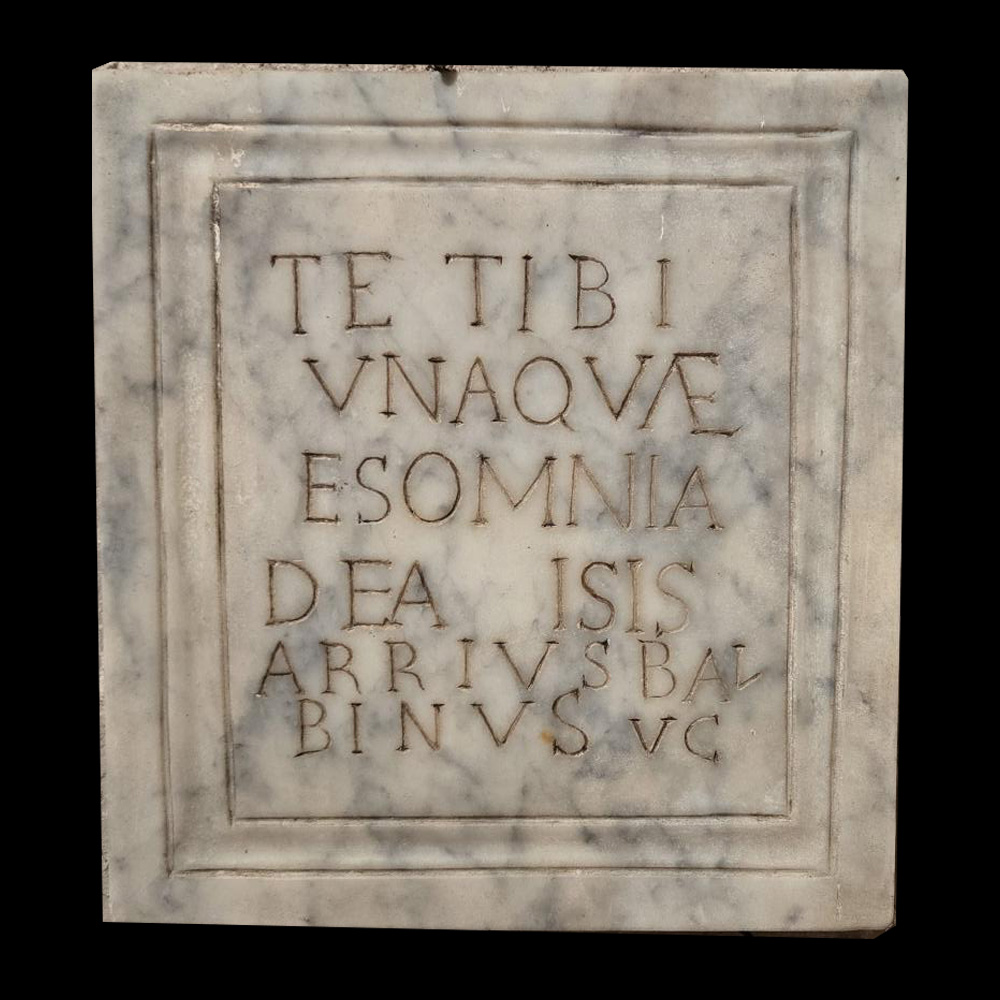Copy of Roman inscription
→ Gift in memory of Carlo Balbino
“Isis Panthea is Isis of a thousand names”
“…cuius numen unicum multiformi specie, ritu vario, nomine multiningo totus veneratur orbis” (Apuleio, Le Metamorfosi, XI,5).
The most famous evidence of the cult of Isis Panthea, reported by all scholars of antiquity between the 16th and 17th centuries (Pignoria, Ligorio, Graevius, etc.), is an inscription from the 3rd century AD, found in Capua:
TE.TIBI.UNA.QUAE.ES.OMNIA.DEA.ISIS (To you who are One and All, O Goddess Isis).
The adept, Senator ARRIUS BALBINUS, thus wished to leave engraved on marble the testimony of his devotion to the goddess." From B. de Rachewiltz, Roma Egizia, 1999.
The original inscription, on proconnesian marble, is now on display in the hall of Eastern cults at the National Archaeological Museum in Naples.
The copy on display in the Iseum is a gift from the friends of architect Carlo Balbino, the previous owner of the Iseum building, who in the 1980s bore the enormous cost of the archaeological excavations carried out in accordance with the law by the Archaeological Superintendency of Rome under the then superintendent Prof. Adriano La Regina, to clear the remains of the Camigliano arch from debris.
The expense incurred by architect Balbino was truly remarkable, but above all, Balbino's vision of financing the excavations in accordance with the law (until then, it was very rare for institutions to be involved in private properties) is to be commended. Thanks to compliance with this procedure, the property is now open to the public.
Last but not least, we note the incredible coincidence of the homonymy between the Roman senator Balbinus, a devotee of Isis, and the architect Carlo Balbino, the latter a highly original and tenacious patron of the arts, separated by about 1700 years.


